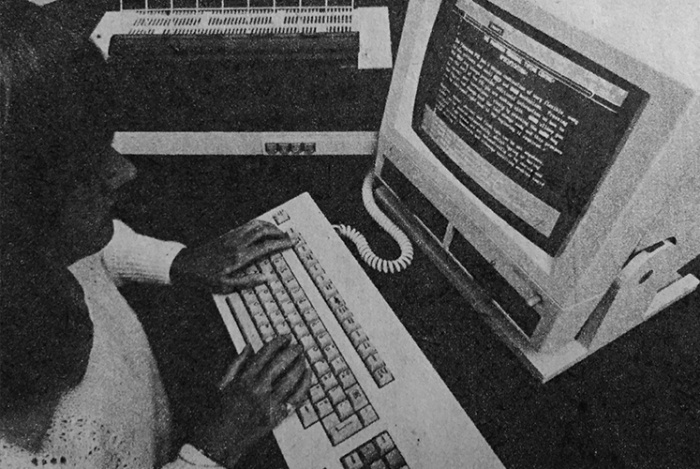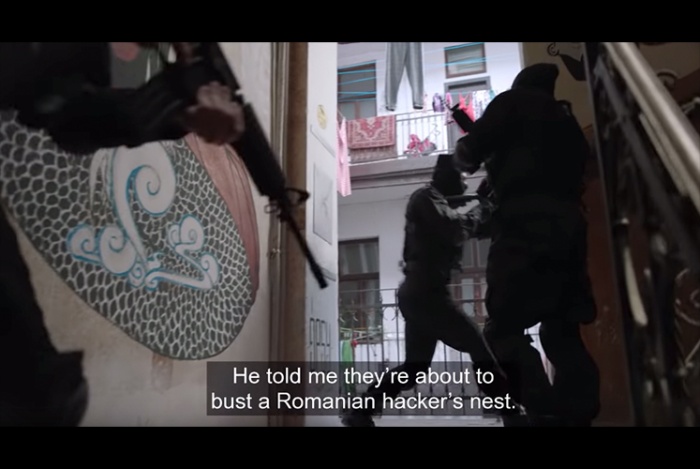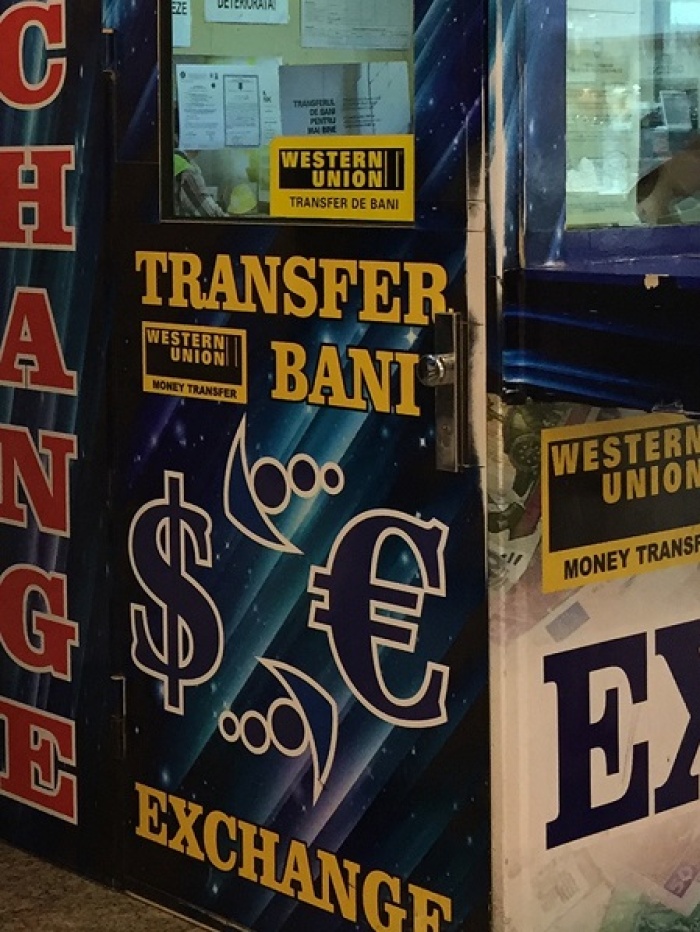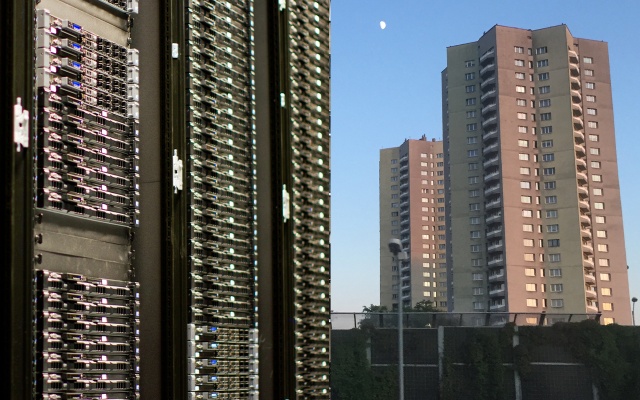For a job with such a mysterious aura, it seems weird how many of us know precisely what a hacker looks like. If you’re one of the few people who has never seen one, please open a Google Search page, type “hacker” and click on “Images.” You’ll see him wearing a hoodie throwing a long shadow over his face. You’ll see him sitting in front of several monitors, under a dim green-blue light. You’ll see him working on destroying another website, his fingers barely touching the keyboard, like a piano player. You’ll see him, but you’ll never truly understand him or his mission.
Then comes journalism, playing its part, amplifying the mystery. In Romania, a lot of newspapers and websites glorify hackers: the more daring and the greater the number of attacks, the better. Take this title, for instance: “Romanian hackers, back on top. How many computer attacks have their signature.” Or “Romanian hackers have scared America again!”
Romanian politicians are also proud of the local hackers: in 2017, after a major cyberattack that affected 99 countries, Liviu Dragnea, at that time the leader of the Social Democrat Party and the most powerful politician in Romania, said that “maybe these hackers are good Romanians and wanted to fire a warning shot.” The debate around the morality of such actions is often left aside, in a country where corruption is part of people’s daily lives and where being resourceful is highly appreciated.
We love hackers because we see them as depictions of Romanian cleverness, as super-individuals with power over structures which seem omnipotent (governmental agencies, huge corporations, etc.), as the products of the elite Romanian science schools.
How was the myth of the Romanian hacker built? As in many areas, it had to do with communism and its constructs. In the first years of his administration, the former dictator Nicolae Ceaușescu tried to play a complicated role as an independent voice from the East, attempting to be accepted both by Moscow and Washington, D.C. In order to gain credibility during the Cold War, Ceaușescu also needed to build the image of a strong country. While the space race was underway, Romania tried to develop its science and technology schools and institutes. In 1968, on the occasion of the French leader Charles de Gaulle visiting Romania, the Eastern European country signed a secret agreement with France to build the first computer from the IRIS family together.
“At that time, the Communist Party – influenced by some scientists, probably – adopted a kind of computerization strategy for Romania, by which an ecosystem was actually created,” Florin Talpeș – CEO and founder of Bitdefender, a major Romanian cybersecurity and anti-virus software company – told me in an interview two years ago. High schools that specialized in computer science and computer science departments were created. In parallel, research institutes in the high-tech area appeared. Regional computing centers that operated the financial situation of state-owned industrial enterprises were started. “Today we would call them cloud data centers,” Talpeș explained.
The interest in technology pushed Romania more to the West. In 1973, Rom Control Data, a company producing peripheral products for computers, was created in collaboration with the United States. Rom Control Data survived as the only Romanian-American company until the Romanian Revolution in 1989 (after that it only assembled computers, and since 1996 the company’s single activity is renting the buildings in its property). However, as the Ceaușescu regime grew more and more paranoid both regarding the East and the West, Romania imported fewer goods, including technologies, and the momentum stopped. The country tried to build “its own” technologies, using economic espionage and reverse engineering. The fragile cultural bridge to the West was also destroyed. Talpeș – who studied Mathematics and later worked at The Institute for Computer Technology in Bucharest (ITC) remembers that the access to international scientific journals for young researchers such as himself was cut off. “We would get access to magazines with the help of some friends. There was a professor at the Polytechnic University who would get a magazine. We would copy it, so dozens of other people would get to read it.” People were eager to consume such texts, as Romanian communism offered only two or three hours of TV programs every day (mostly full of state propaganda). “There were some contradictions on the Maslow hierarchy of needs: food was scarce, and you had to survive; at the same time the lack of TV entertainment offered fewer distractions, so there was an important focus on studying,” Talpeș said.

Zdjęcie z rumuńskiego magazynu Știință si Tehnică.
In 1989, when the political regime collapsed, the high-tech field crashed as well, because of its isolation. “That was the starting point for a new era. An ecosystem which was already producing talents was left without a market.”
On the one hand, Romanians entered democracy with the belief that they lived in a country with unique features, the result of decades of national communism propaganda: “an island of Romanity in a Slavic sea” (Romanians speak a language of Latin origin), or a place with huge – and never fully achieved – agricultural potential. According to a dominant discourse during communism, Romania had always had people with extraordinary qualities, but foreign forces were constantly trying to sabotage its development.
On the other hand, people experienced a profound economic shock, as part of the systemic transition from communism to capitalism. As factories crashed, many were left unemployed and had to look for survival solutions. The technical schools and universities continued to be in great demand, because their graduates had a chance to find a job in Western Europe or the United States. Indeed, some were employed by important IT companies, but the story is similar to other countries in the region. In hard times such as the Romanian transition, when they feel their dignity is threatened, people tend to build their pride even around vague, insignificant, or even inflated achievements: we have the second-largest administrative building in the world after the Pentagon, we have one of the fastest internet speeds in the world (though according to a recent study, Romania moved from 5th place in the world in 2018 to 37th place this year), and we have the best IT workers.
In 2017, I discussed with Daniel Dines, CEO of UiPath, a global software company, soon after it received $30 million dollars from an American investment fund. Now, UiPath is worth $7 billion and has around 3,200 employees worldwide, and Dines was named the richest Romanian. In that interview, Dines described a portrait of the Romanian IT worker, with good and bad: “The Romanian talent is a multi-disciplinary one: he can understand various things, he can find shortcuts. He is less a talent that becomes an extraordinary professional, one to deeply understand a field.” Before he founded UiPath, Dines worked for Microsoft in the US, so he can easily identify, by comparison, the local flaws: he noticed that Romanians are much more emotional and defensive. “It is much harder to tell an IT employee here: ‘You did this software wrong,’ because people take it personally.”
Enter the Romanian hacker. A few years ago, the story of the city of Râmnicu Vâlcea, a local “Hackerville,” believed to be inhabited by formidable young IT experts who made fortunes from cybercrime. In fact, they were petty thieves who would use announcements for products that didn’t exist on e-commerce portals in order to trick customers. In 2014, I talked with one young woman who committed such offences. She told me that in her high school, almost everyone she knew from the last two years had done that. With the money they earned, they used to buy jewelry and expensive clothes. In the last few years, dozens of online thieves from Râmnicu Vâlcea were arrested, with the support of American investigators.

Klatka z serialu Hackerville, 2018. Produkcja: HBO Europe, Mobra Films, TNT Serie, UFA Fiction.
“From my point of view, hackers fall into two categories,” Daniel Dines says. “There are these brilliant guys who know how to break into a system and who understand vulnerabilities and are up-to-date with everything people publish, who create applications. Of course, not only would NASA hire these guys – anyone would. That’s the first category. But I think people in this category are rare because they have the intelligence to do things in other ways. The other category, represented by hackers like those from Râmnicu Vâlcea, is represented by rogues who steal credit cards and create fake accounts on Ebay and would sell something to gullible people. That’s just internet theft.”

Kantor w centrum handlowym w Râmnicu Vâlcea.
Maybe the most famous Romanian hacker – Guccifer – doesn’t fit any classic description. A little while after his first arrest, in August 2011, TV cameras showed Guccifer wearing a white T-shirt, blue jeans, sunglasses, and a camouflage cap. During the time he was carrying out attacks, he was an unemployed taxi driver in his mid-30s from a village in Western Romania, without any particular computer experience. He didn’t make a fortune from his attacks and he is a fan of conspiracy theories. He didn’t use smart code lines to access information, but he guessed passwords and answers to security questions by using information available online. His attacks were often frivolous, emptied of any larger meaning. Guccifer is the Romanian hacker we didn’t imagine, but we still crammed him into the bigger story in our minds.

We feed ourselves with myths because they provide answers to otherwise complex realities and adapt them according to our own needs. It is comforting to imagine miraculous solutions that can save us from poverty, filthiness, diseases, corruption, all the overwhelming issues of our world.
In a time when technology has taken over our lives, when governments and corporations collect our personal data and use it for their own interests, hackers represent the hope that we can still have our revenge. Hidden behind their monitors, these individuals who we assign extraordinary capabilities to, can steal the secrets of the rich and powerful and that is enough to qualify them as heroes. Guccifer accessed the vulnerable side of politicians and celebrities and he did that for ridiculous purposes, using rather primitive methods. He took the larger-than-life image of the hacker and made it accessible – that is one of the legacies Guccifer left to our world.
BIO
Vlad Odobescu (@vlad_odobescu) is a feature writer based in Bucharest with 15 years of experience. His stories have been published by media outlets such as USA Today, Washington Times, Politico.eu, New Statesman, Balkan Insight. He brings an anthropological touch to his stories: he likes to immerse himself into small communities and find surprising connections, in order to discover, together with his readers, larger meanings. For instance, Vlad wrote about corruption in Romania by reporting on Navodari, a town where the mayor was arrested, but still had the support of voters. As another example, he studied the effects of the concentration of farmland through the case of Dudestii Vechi, a village where an Italian company bought most of the plots of land.
He has won multiple awards and fellowships, including the first prize of the Balkan Fellowship for Journalistic Excellence in 2013 and the prize for best feature writing awarded by the Romanian Press Club in 2012.
Between August 2014 and April 2015, Vlad was a visiting fellow for the Hubert H. Humphrey Fellowship in Journalism at the Walter Cronkite School of Journalism and Mass Communication (ASU) in Phoenix, Arizona. As part of the fellowship, he worked as a professional affiliate with the Center for Investigative Reporting / Reveal in California.
He hold a Bachelor’s degree in Journalism from “Alexandru Ioan Cuza” University in Iași, and a Master’s degree in Anthropology from the National School of Political Science and Public Administration in Bucharest.
* Cover photo: Television studio in Râmnicu Vâlcea. Photo: Nicoleta Moise.



